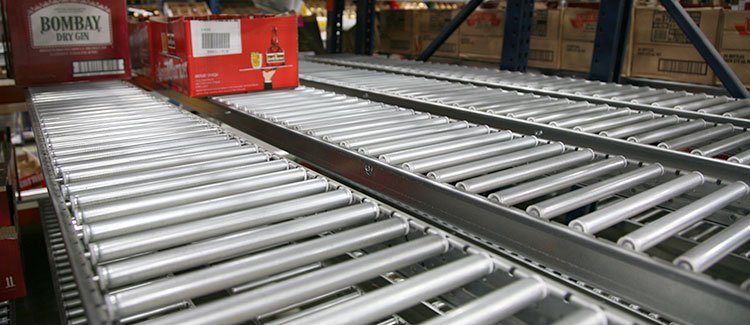
Carton Flow Rack: Roller vs. Wheel
Nathan Busch | 02 February 2017
By definition, carton flow rack is easy to understand; a form of shelving that uses a rear load design, as an item is removed from the front the item directly behind it takes its place. This framework is beneficial because product is automatically rotated on a first-in, first-out premise, keeping stock organized and visible, and in reach which streamlines inventory. In short, carton flow disentangles racking allowing distribution centers, warehouses, and manufacturing facilities alike to reach top performance, which leads to overall profitability.
In any case, the idea gets to be distinctly harder to comprehend when choosing between rollers and wheels for your carton flow. To start, consider your operation and flow of materials, once a stream plan is built, it comes down to making an informed decision between the two.
Carton Flow with Rollers
If your product line is consistent, offering steady size and weight, roller options are ideal for you. Another key component that will sway you towards rollers is if the quality of the containers is poor or unstable, such as flimsy cardboard. The rollers give a great deal more surface area, which permits the heaviness of the containers to be evenly distributed putting less weight on the container itself. Additionally, in the event that you are in a humid environment or damp domain, weight and quality of the containers can create an issue; however, rollers perform well under these conditions.
Because rollers are consistent (more often than not) there is less danger of your containers getting stuck or stalling out. Applications for carton flow with rollers are found in the beverage industry where there is very little fluctuation in item measure. Cases, six packs, and even kegs are a perfect fit for roller applications.
Carton Flow with Wheels
 Wheel beds offer much more flexibility than the normal roller bed carton flow rack. In the event that you have a lot of fluctuation in your product offering, odds are that devoted roller paths won't give the adaptability your operation requires to reach top performance. Wheel beds can upgrade space usage inside your rack because you can consolidate your product line and, in turn, increase efficiency. This option is also built to streamline re-slotting.
Wheel beds offer much more flexibility than the normal roller bed carton flow rack. In the event that you have a lot of fluctuation in your product offering, odds are that devoted roller paths won't give the adaptability your operation requires to reach top performance. Wheel beds can upgrade space usage inside your rack because you can consolidate your product line and, in turn, increase efficiency. This option is also built to streamline re-slotting.
Your in-feed guides can accommodate almost any size carton, which gives you an advantage over the rollers because they are limited in widths. Applications for carton flow rack with wheel beds are most frequently seen in the candy and tobacco industry. In the case of Carton Flow: Rollers vs. Wheels, it’s a hung jury. Neither option truly outweighs the other because both have their pros and cons. When considering the best route for your carton flow, keep these key points in mind:
- Wheels are better for product that varies in size, as well as for operations that frequently reroute/reslot product.
- Rollers will prove more effective in a damp or humid environment, and are better suited for products of similar size and weight.
Comments
No comments have been posted to this Blog Post
Leave a Reply
Your email address will not be published.
Comment
Thank you for your comment.